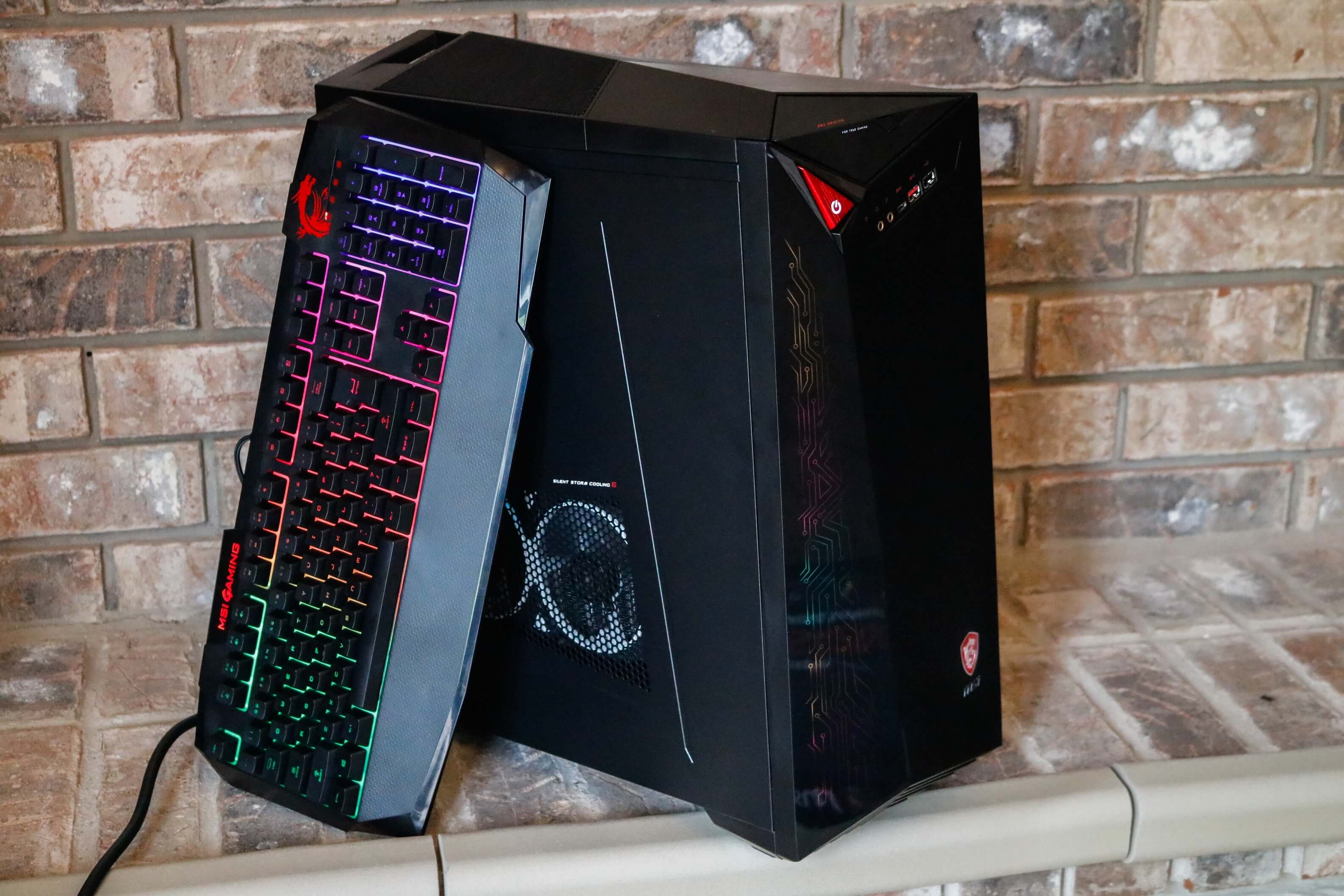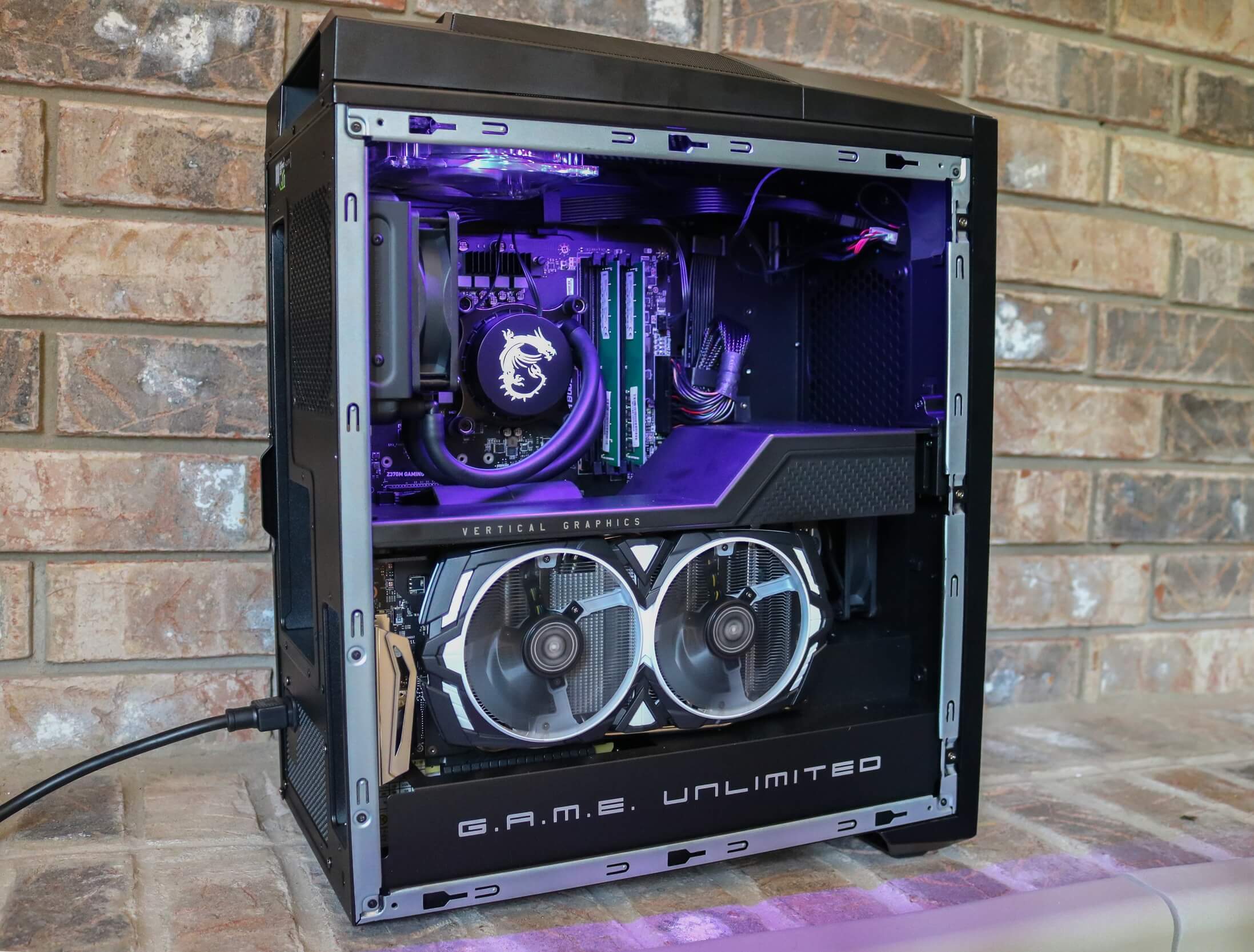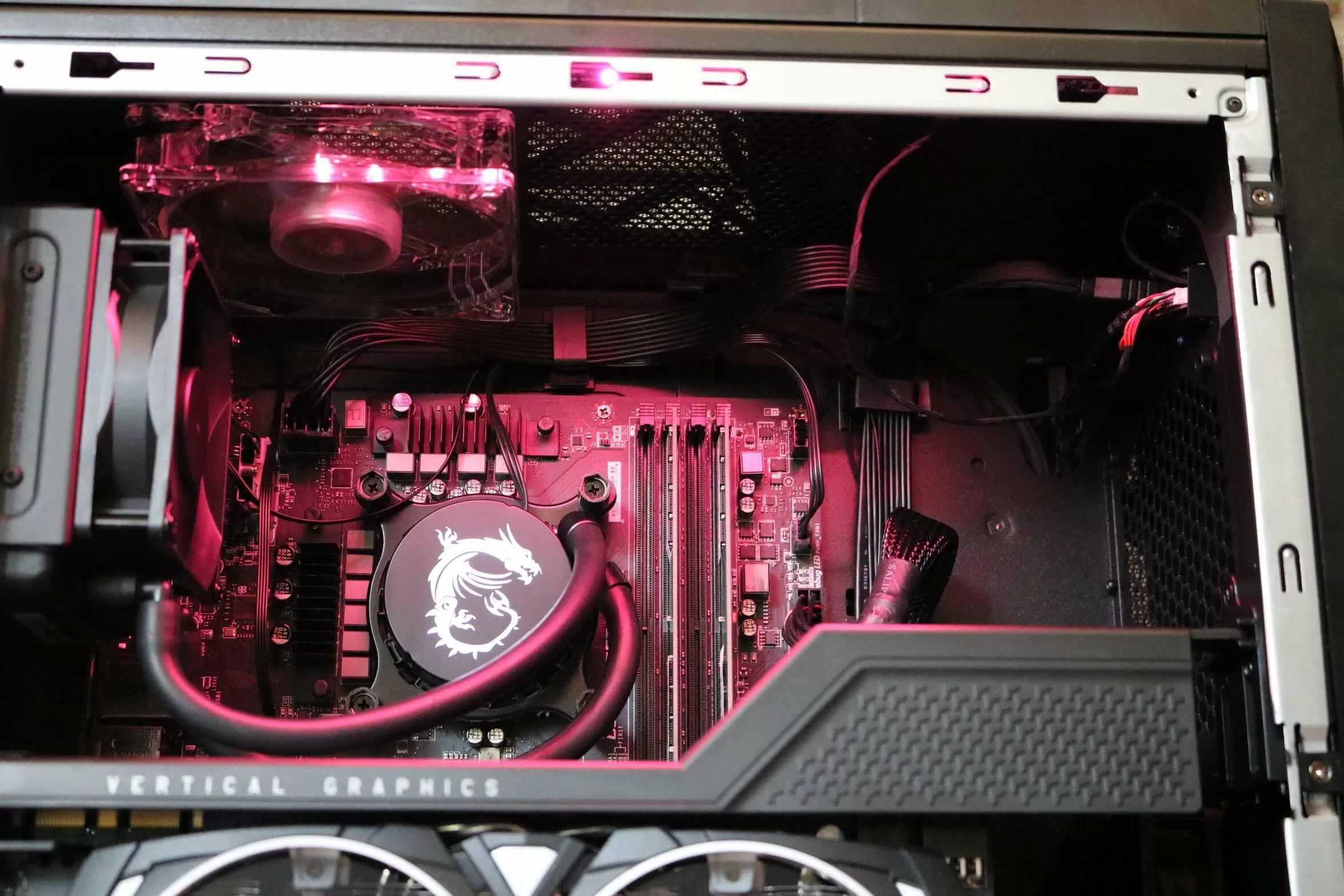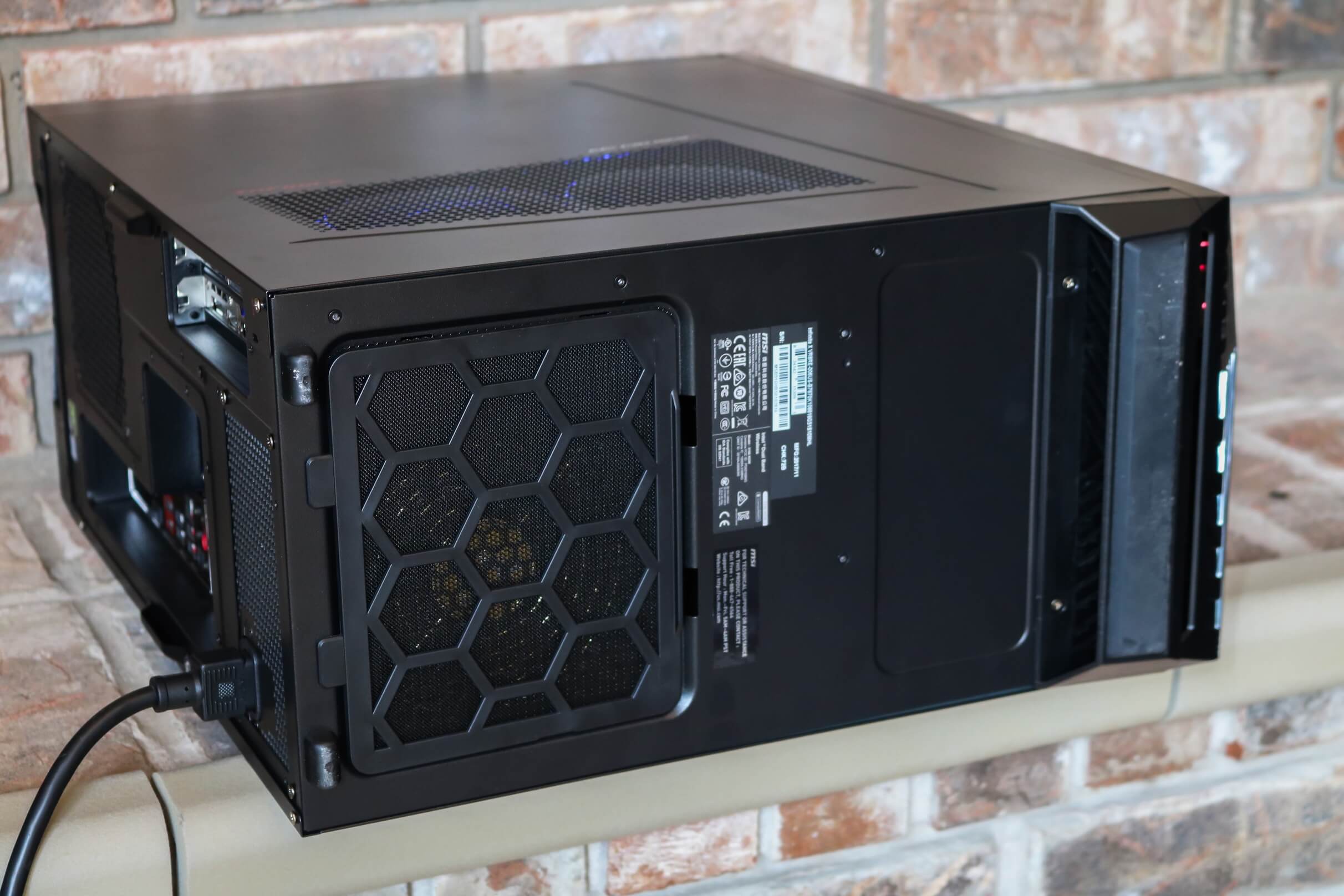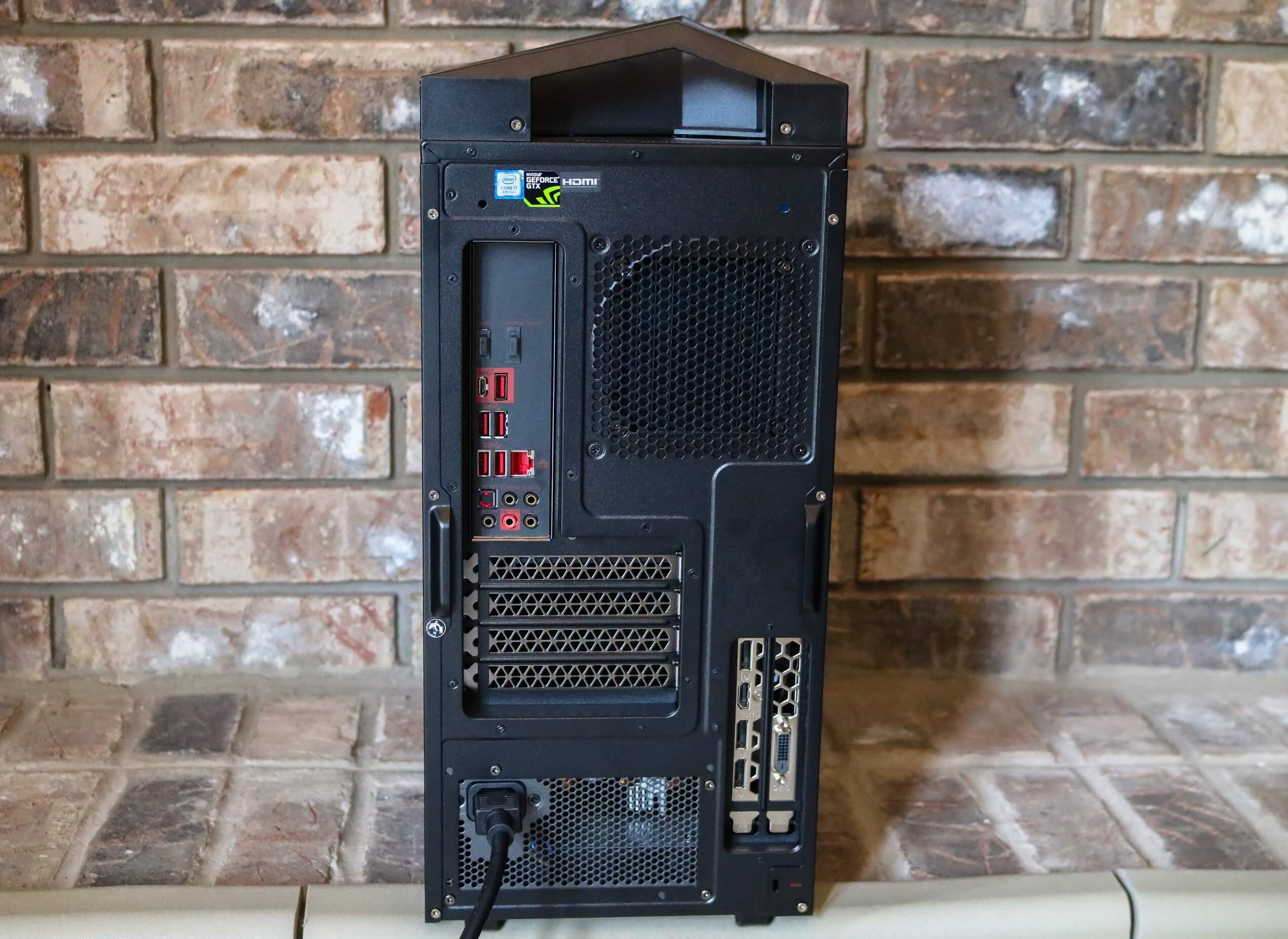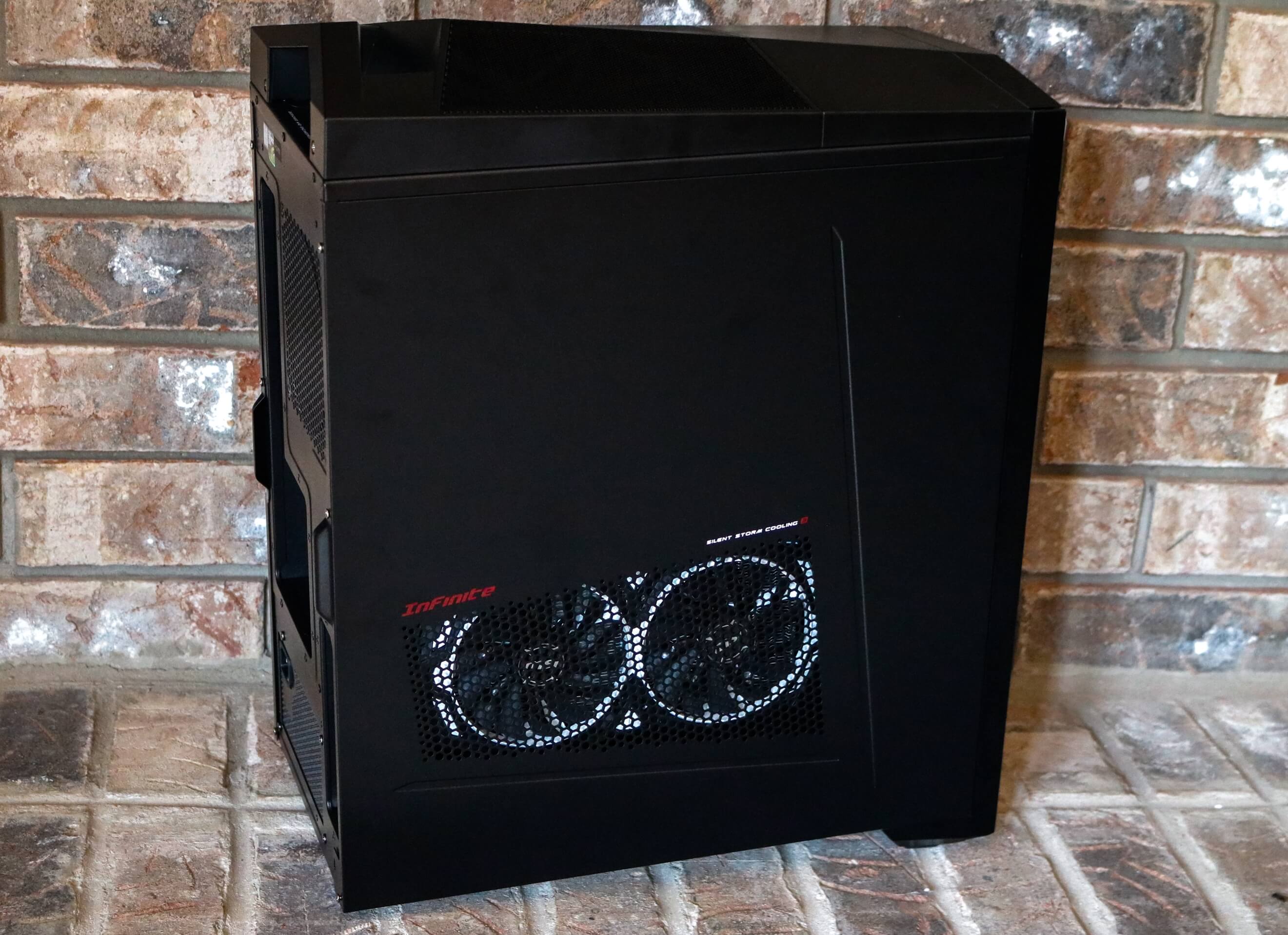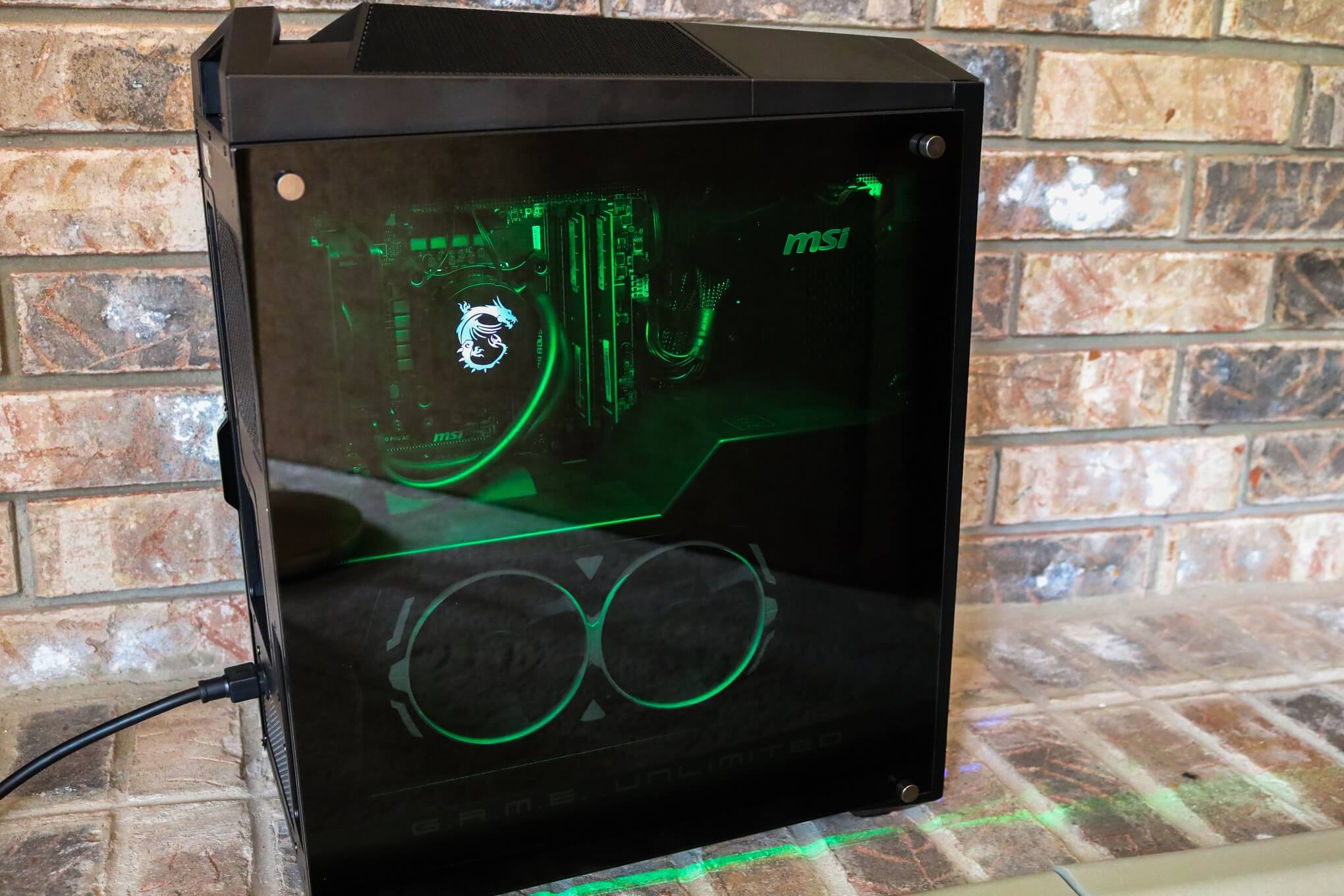Choosing your next PC can be a rather daunting process. Do you go with a pre-built or build your own? Do you go with a small form factor or a full size? With RAM and GPU prices fluctuating so frequently, it's difficult to make a choice. Today I'll be taking a look at MSI's Infinite X Gaming Desktop which should be a strong contender in the pre-built market. It's a full sized, gaming powerhouse with an impressive aesthetic to match.
As someone who's generally not a fan of most pre-built gaming computers, I do actually like most of what the Infinite X does. It come pre-assembled and tested with all the parts a gamer would need, but at the same time retains the upgradability we've come to expect.
The Infinite X is currently available in five configurations ranging from a GTX 1070 up to a GTX 1080 Ti. The top three models come with an Intel i7-8700K CPU and 16GB of RAM while the bottom two have the non "K" variant of the CPU. For storage options, the Infinite X can be configured with various combinations of M.2 SSDs, a 2.5" drive, and a 3.5" drive. For the motherboard, the Infinite X uses MSI's own Z370M Gaming Pro AC across the board.
The configuration I was sent for review is the VR8RE-006US which features a GTX 1080 and a 512GB SSD. Besides these differences in components, the rest of the systems should be similar. Powering all variants is a 550W 80 Plus Bronze PSU. More on that later.
The GPU and motherboard are both off-the-shelf components instead of white label substitutes. This is nice to see and allows for a complete system upgrade in the future if you find it becoming outdated. Since MSI makes both motherboards and GPUs, this is not surprising.
Now on to a tour of the rig. The entire computer features sharp angles that connect various geometric shapes. This certainly gives the Infinite X a "Gamer" look, but it's not too over the top. The default side panel and top panel are matte black metal while the front panel has a glossy black plastic cover. The case comes with a standard side panel installed with vents for the vertically mounted graphics card. This gives it direct access to fresh air to help with thermals. Also included in the box is a tempered glass side panel.
At the bottom of the case we find a standard magnetic dust filter over the PSU and a large rubber foot. This tilts the case backwards slightly and allows for proper airflow even in carpeted areas.
As I mentioned before, if you prefer a glass panel, MSI has included one in the box. This gives you a full view of the internals through the tinted, tempered glass. It attaches with four weighty thumb screws each screwed into a standoff on the side of the case. This slightly offsets the panel to provide the necessary airflow without any other ventilation holes. Since it is offset, I found it can easily snag on things when being transported. I would recommend taking it off when moving the case since it is only attached with four small screws.
From the front, we can clearly see this offset in the side panel. Also visible is the RGB illumination strip on the front of the case. It consists of several elements that evoke a circuit board pattern and can each be set to a different color. This front panel lighting can also be synced with the rest of the case using MSI's Mystic Lighting software.
In terms of front panel I/O, you get headphone and microphone ports, a USB-C port, a USB 3.0 port, and a USB 2.0 port. Next to this is a large illuminated power button. I found it extremely flimsy and of very poor build quality. Every time you turn on the computer, you will be reminded of how cheap it feels. Above all of this is a slim CD drive surprisingly. For what it's worth, I would gladly have done without this and used the money saved for a proper power button. Finally, there is a glossy MSI logo on the bottom right corner as well.
At the rear of the case we find a very sturdy carrying handle. It felt very solid and I had no fears when carrying the case by it. That's unfortunately something that can't be said for other cases with handles. Below that is the rear I/O and since the MSI Z370m is an mATX motherboard, it is somewhat limited. We have an HDMI and DisplayPort for the built in graphics, 10Gbps USB 3.1 Type A and Type C ports, four more USB 3.0 ports, a gigabit ethernet port, and the standard six connector audio setup that all motherboards have. Some additional USB ports and a second ethernet jack would have been nice, but this configuration should be fine for nearly everyone. Since the graphics card is mounted vertically, you'll want to make sure you have a long enough cable to reach your monitor.
Both the front and rear side panels are attached with tiny screws and slide into place with metal fins. These screws are easy to get lost so thankfully MSI has included some extras in the accessory kit that comes with the computer. These screws and the sliding fins make the case feel outdated and cheap. I would have prefered a hinge and thumbscrews like the glass side panel uses instead here. The money saved by removing the CD drive could easily have allowed for this since it would only cost a few dollars for MSI to implement.
Inside most of the case is painted black except for an unfinished ring around the edge. This seems like a corner that was cut unnecessarily since painting it to match the rest of the case would not take much extra work. Besides this, the main thing that pops out are the three separate zones inside the case. At the bottom is a power supply compartment, then the graphics card, and finally the motherboard and CPU at the top. These three compartmentalized areas are designed to improve cooling. If the GPU is under load, it will not heat up the rest of the components. The same applies with the CPU and PSU.
Taking a closer look at the top, we find a few more corners that were cut. The RAM has no visible branding and does not have heat spreaders. While this doesn't affect performance, it certainly doesn't look as good. Cable management in this situation is also difficult. As we'll see later, there's not much room on the other side, but I think MSI could have done better here. Granted, this might not be a big deal for the consumer looking to buy a pre-built instead of building a PC themselves. The last critique I had in this area was the CPU cooler. It only has a single 92mm radiator and fan to cool an overclocked i7-8700K. If I was designing the system, I would have put in a 2x120mm radiator at least.
After a 20 minute sustained load test, CPU temperatures were around 70 degrees with GPU temps hovering around 60 degrees. These are pretty good although on a hot day, the CPU get a bit toasty and not boost up to the full speed. Each chip may perform differently, but mine boosted to 4.8GHz for short periods of time and 4.4GHz sustained. These numbers are pretty good for a 6-core CPU and should have no problem chewing through workloads. Surprisingly my GPU was not factory overclocked but a simple boost was very easy to obtain in MSI Afterburner.
Moving around to the rear of the case, we see the limited space for cable management. Surprisingly there are no cutouts for the motherboard, CPU, or other power cables. They all must be run from the front. Considering there is a mount for a 3.5" drive, there would certainly have been enough space back here for this. Again, this won't affect performance and not everyone will care about cable management, but it seems like such an easy fix.
Every PC needs peripherals and the Infinite X comes packaged with some rather nice ones in the box. The keyboard isn't mechanical and the backlight can't be modified, but it does look and feel better than most included keyboards. The same goes for a mouse. Unless you're into highly competitive eSports games and need a very precise mouse, the included one will work great for nearly everyone else.
Since the Infinite X uses mainstream hardware, its performance will be nearly identical to other systems we've tested with the same hardware. For detailed performance numbers, I'll point you to our reviews of both the GTX 1080 and 8700K. They should give you a good idea of just how powerful this system is. Of the various storage options, my unit had a 512GB Intel M.2 SSD that achieved 1772MB/s read speeds and 363MB/s write speeds. For whole system benchmarks, my unit achieved a 3DMark Fire Strike score of 19559 and a Time Spy score of 7578. Those looking to pick a configuration should have an idea for what level of performance they are looking for or at least a budget of how much they want to spend. Knowing either of these should help you easily select the right model for your use.
With this much power, comes some minor drawbacks. Since the CPU cooler is only 92mm, the fans and pump need to run at a higher speed in order to keep everything cool. This results in the Infinite X having a faint, but audible hum even at idle. During period of intense load, the computer can get pretty loud. Since thermals are pretty good by default, there is some room to adjust the fan curves to keep the system a bit quieter.
Another smaller issue I observed was with the power supply. The system under full load drew about 650 Watts from the wall while the power supply is only rated for 550 Watts. Taking into account the 80 Plus Bronze efficiency, this puts the power supply at almost maximum load. While this isn't dangerous, power supplies are designed to be most efficient at about 50% efficiency. Running the PSU at full power can also decrease its lifespan. I would have expected a slightly more powerful unit given the load.
Once you're inside Windows, MSI has included a few pre-installed programs on the Infinite X. There is a trial of Norton Antivirus that frankly I'd recommend just uninstalling. Next up there are a few MSI specific programs to help manage the system. This includes the MSI Command Center, an MSI gaming program, and the MSI Mystic Lighting software. The Command Center will allow you to monitor system temperatures, clock speeds, adjust fan curves, and the like. The gaming program is designed to help optimize system performance to give a better gaming experience but I've never felt the need to use programs like this. Finally, the Mystic Lighting software controls all aspects of the RGB lighting in the case. This includes the GPU, internal case lighting, and the front panel pattern. The lights can be set to solid colors, patterns, or one of many included effects.
To someone who may not be familiar with the MSI ecosystem, all of these programs may get confusing. I would appreciated rolling everything together in a single piece software as this would make it easier to find whatever setting you are looking for.
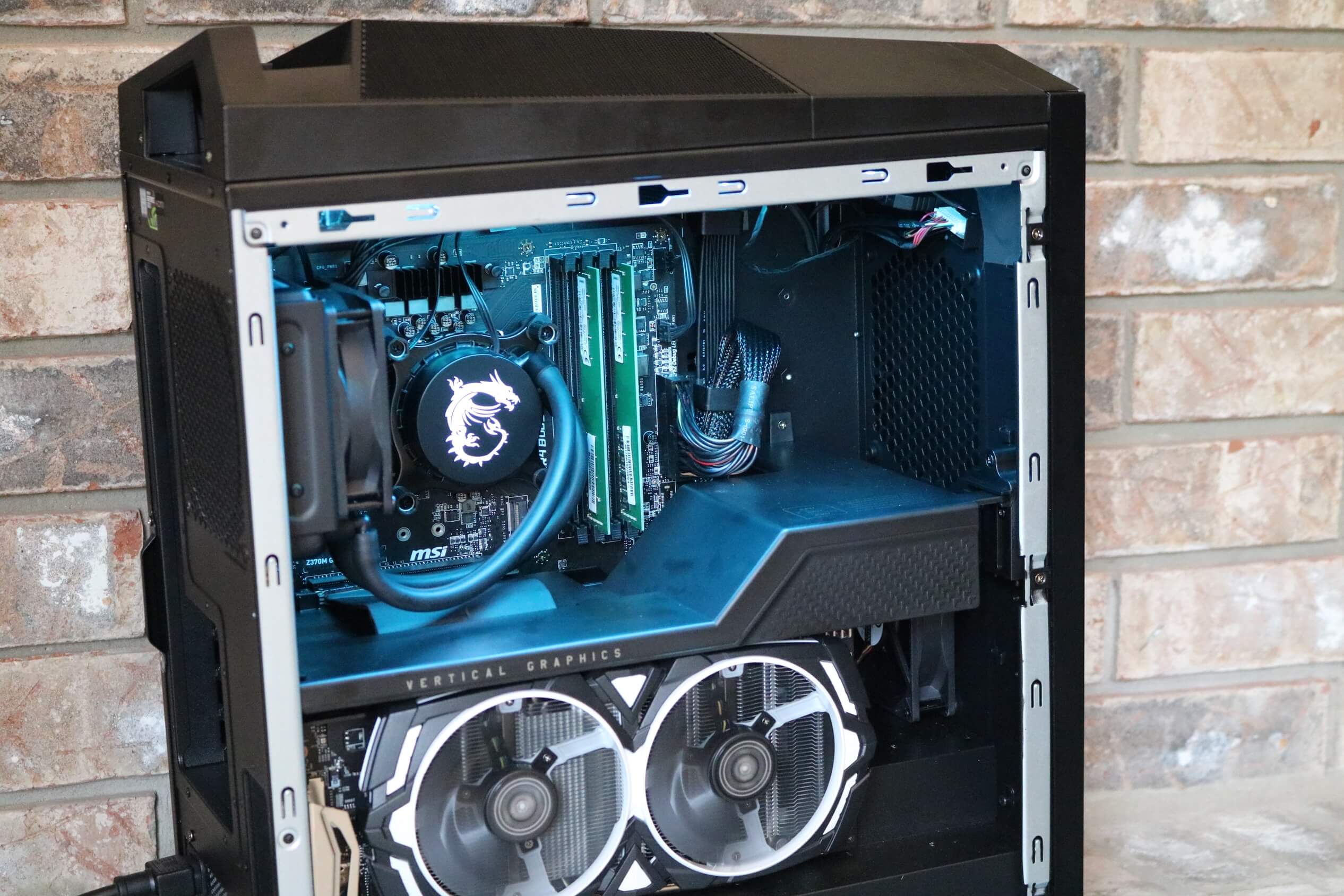
The last major thing to go over is pricing. As reviewed, our test unit retails for $1900. If you were to build such a system yourself with the same components, it would cost you about $1600-1700 depending on market prices. This results in the Infinite X having a roughly $250 markup over an off-the-shelf build. This may be a little high for some, but you do get the good looking case, a one year warranty, full system integration and validation, and it removes the hassle of sourcing components and ensuring compatibility.
Obviously seasoned PC builders will shy away from such a system, but for those just entering the PC gaming scene, it offers a compelling deal. MSI has many competitors in this market including but not limited to the likes of HP, Alienware, Origin, and Lenovo. Since they all use similar components, performance will be the same across the board. As always, you should search around to find the best deal, but if MSI's Infinite X is an option to you, it would be hard to go wrong. It makes a few sacrifices along the way, but overall has it where it counts. It would make for a very capable and elegant gaming machine you can simply buy, plug in and go.
Shopping Shortcuts:
- MSI Infinite X (GTX 1070, 256GB NVMe SSD + 2TB HDD) on Amazon, Newegg
- MSI Infinite X (GTX 1080, 512GB NVMe SSD) on Amazon
- MSI Infinite X (GTX 1080 Ti, 512GB NVMe SSD + 2TB HDD) on Amazon
score
Pros: Built with real gaming hardware. Vertical GPU mount looks good and helps with thermals. Nice RGB lighting capabilities.
Cons: Poor cable management, minor build quality issues with case.
